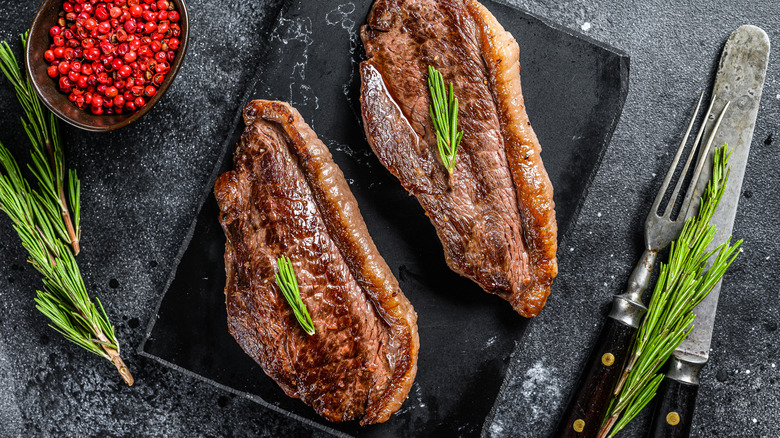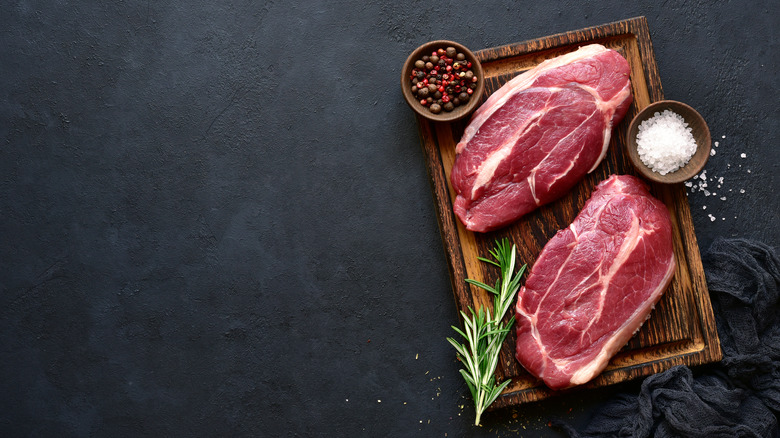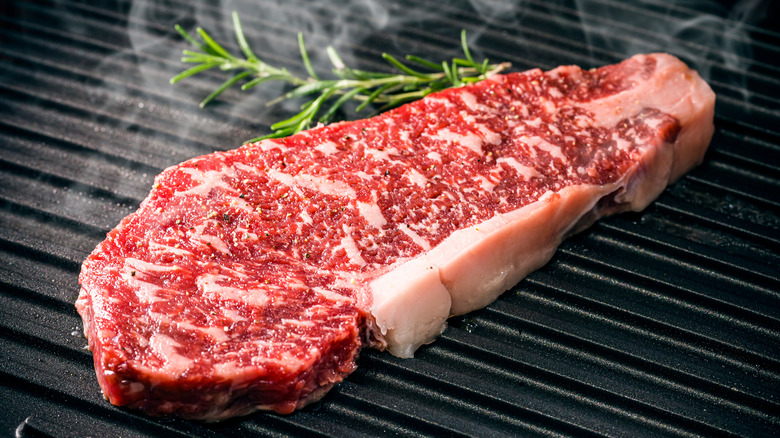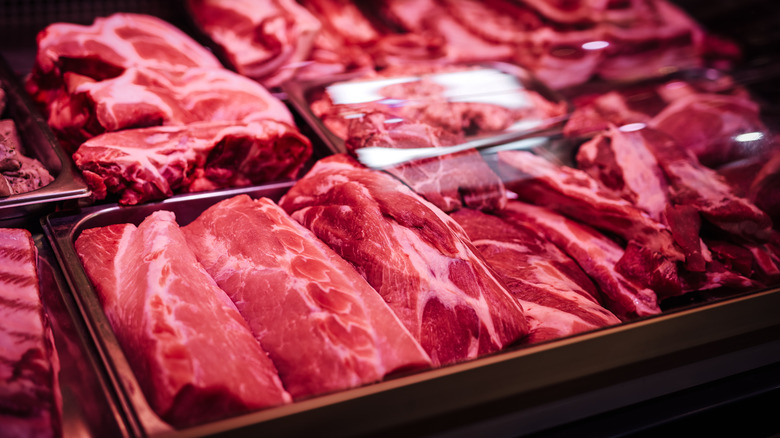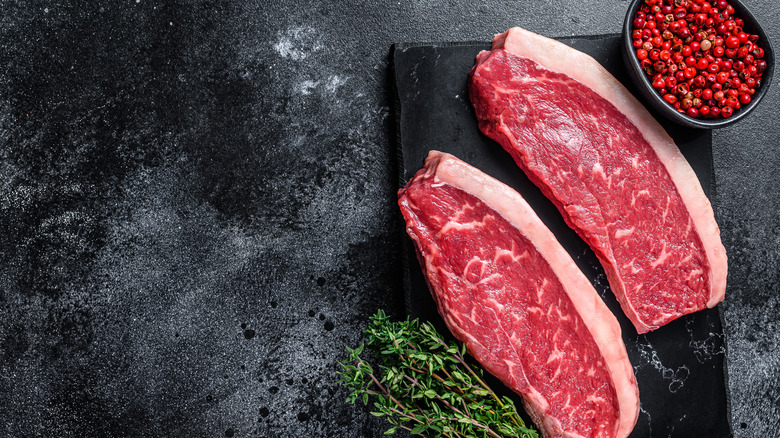What Is Sirloin Steak And How Do You Cook It
Just call us carnivores: We love everything meat, from juicy hamburgers to Nonna's meatballs to towering Reuben sandwiches. And who isn't a fan of all kinds of steak, from T-bones to strips to hangers and more? But sometimes, if like us, you get kind of confused as to which cut is which, and especially when it comes to how to cook each kind, you're not alone. It can be hard to remember, for example, exactly what type of steak a sirloin is — and which recipes can showcase this cut's full potential. So here's a refresher course that might come in handy.
According to The Spruce Eats, sirloin is a semi-lean cut sourced from near the spine of the cow, running from the 13th rib to the end up the hip bone. Sirloin does not have a lot of intramuscular fat, and can sometimes tend to be towards the dry side if it's not cooked correctly. But, there are tried and true ways to keep this cut of meat nice and juicy.
What is sirloin steak?
If you eat red meat, you're likely already familiar with sirloin, which is available not only as a cut of steak but often ends up in the ground beef used for hamburgers, meatballs, and more (via Simply Recipes). According to The Spruce Eats, sirloin is cut from the back of the cow, towards its rear legs, which means it's a muscle that gets a fair amount of exercise, and therefore, sirloin is considered a tougher and less tender cut of meat. However, it's also known for being chock full of beefy flavor, so it's a worthwhile cut as long as it's cooked properly.
Also according to The Spruce Eats, butchers and supermarkets often separate sirloin into two cuts: The top butt, which is a good choice for grilling, and the bottom butt, which takes well to roasting. Top sirloin is usually available as a boneless steak, while bottom sirloin is often cut into roasts which — as they're a little tougher — also are great for being cut into meat for stews.
How to cook sirloin steak
According to The Food Network, sirloin is divided into two sections — the top sirloin and bottom sirloin, the latter of which is often referred to as the tri-tip. The top choice is smaller, more tender, and more expensive, while the bottom is more affordable but somewhat tougher in texture. For this reason, it's important to cook the two parts differently. The Spruce Eats recommends grilling top sirloin steaks while opting for roasting the tri-tip.
To grill a top sirloin steak, marinate the meat or simply season it to taste and then grill over high heat, being careful not to overcook it, says The Spruce Eats. Because sirloin doesn't have a lot of fat, it's best served medium-rare — its taste and texture will suffer significantly if it's cooked past medium.
On the other hand, it's best to roast the tri-tip, according to The Spruce Eats. The blog Baking Mischief also recommends searing seasoned tri-tip in an oiled pan before transferring it to a 425-degree Fahrenheit oven and then roasting for 10-15 minutes per pound. Finally, let it rest under foil before slicing against the grain and serving.
Where to buy sirloin steak
Any butcher will carry both sections of sirloin steak — when purchasing, look for sirloin cuts that have plenty of fat marbling, and ask your butcher to trim as much silver skin from the meat as possible. Sirloin is also widely available in supermarket chains, which should carry both top sirloin steaks as well as tri-tip roast. Once you get the meat home from the store, it will keep for about three days in the refrigerator (via The Spruce Eats).
To extend the shelf life of sirloin, wrap it tightly in plastic wrap or freezer paper and transfer it to the freezer, where it'll keep well for about three months. According to Good Housekeeping, you should defrost the meat overnight in the refrigerator and then pat it dry before cooking. Then fire up the grill or preheat your oven, and get ready to enjoy this economical, tasty hunk of beef.
Nutritional information about sirloin steaks
According to Calorie King, a 4-ounce serving of lean, broiled sirloin steak contains 6.5 grams of fat, including 2.5 grams of saturated fat and 2.6 grams of monounsaturated fat. It also contains 66 milligrams or 22% of the suggested daily value of cholesterol, plus 72 milligrams of sodium, and no carbohydrates. Sirloin steak is a rich source of protein, with a 4-ounce portion providing 34.5 grams or 70% of the recommended daily value of the nutrient; it also contains 23 milligrams of calcium and 444 milligrams of potassium. Four ounces of sirloin also provides 2 milligrams of iron, about 11% of the daily suggested value, according to the FDA.
Like other cuts of steak, sirloin is rich in vitamin B12, an essential nutrient for supporting the brain and nervous system; zinc, which helps support the growth of the body; selenium, which may have antioxidant and anti-inflammatory effects and supports thyroid function (per a study in the National Library of Medicine); and plenty of creatine, which serves as an energy source for muscles (via Healthline).
